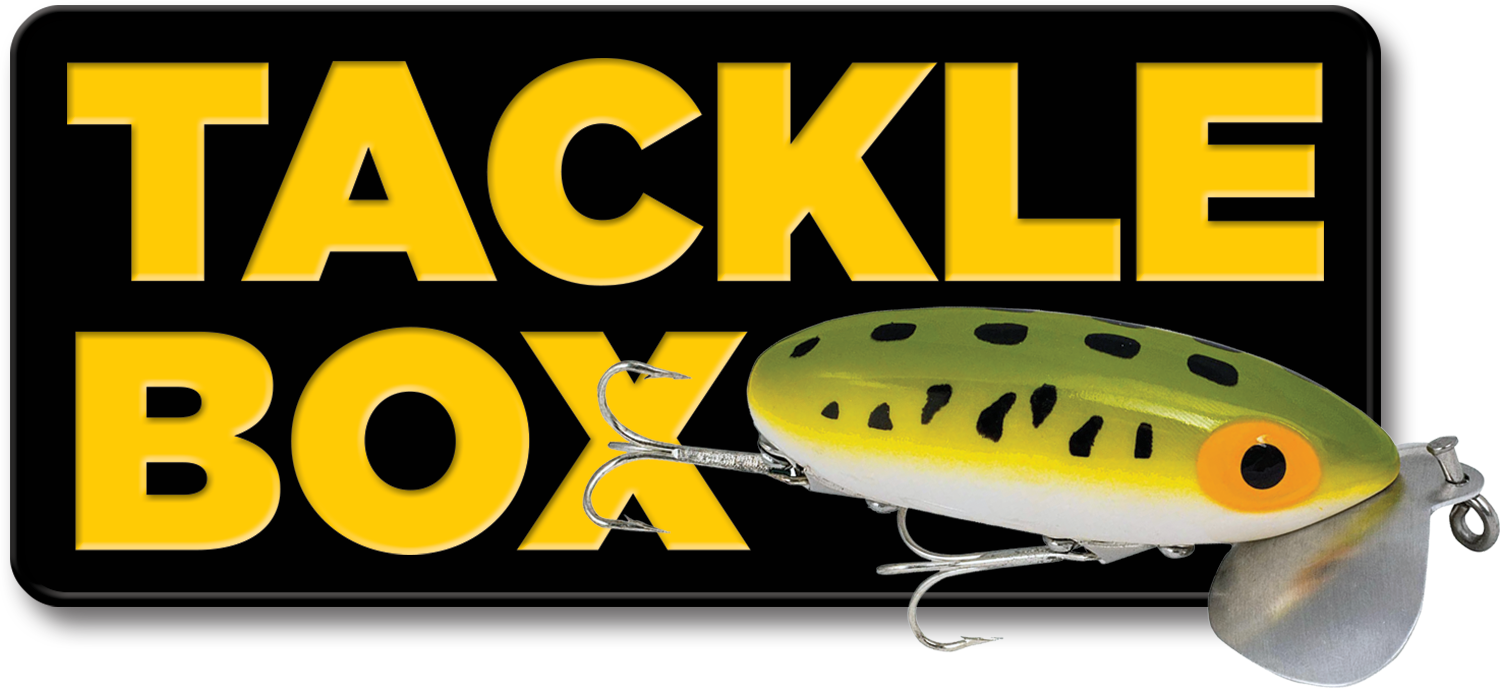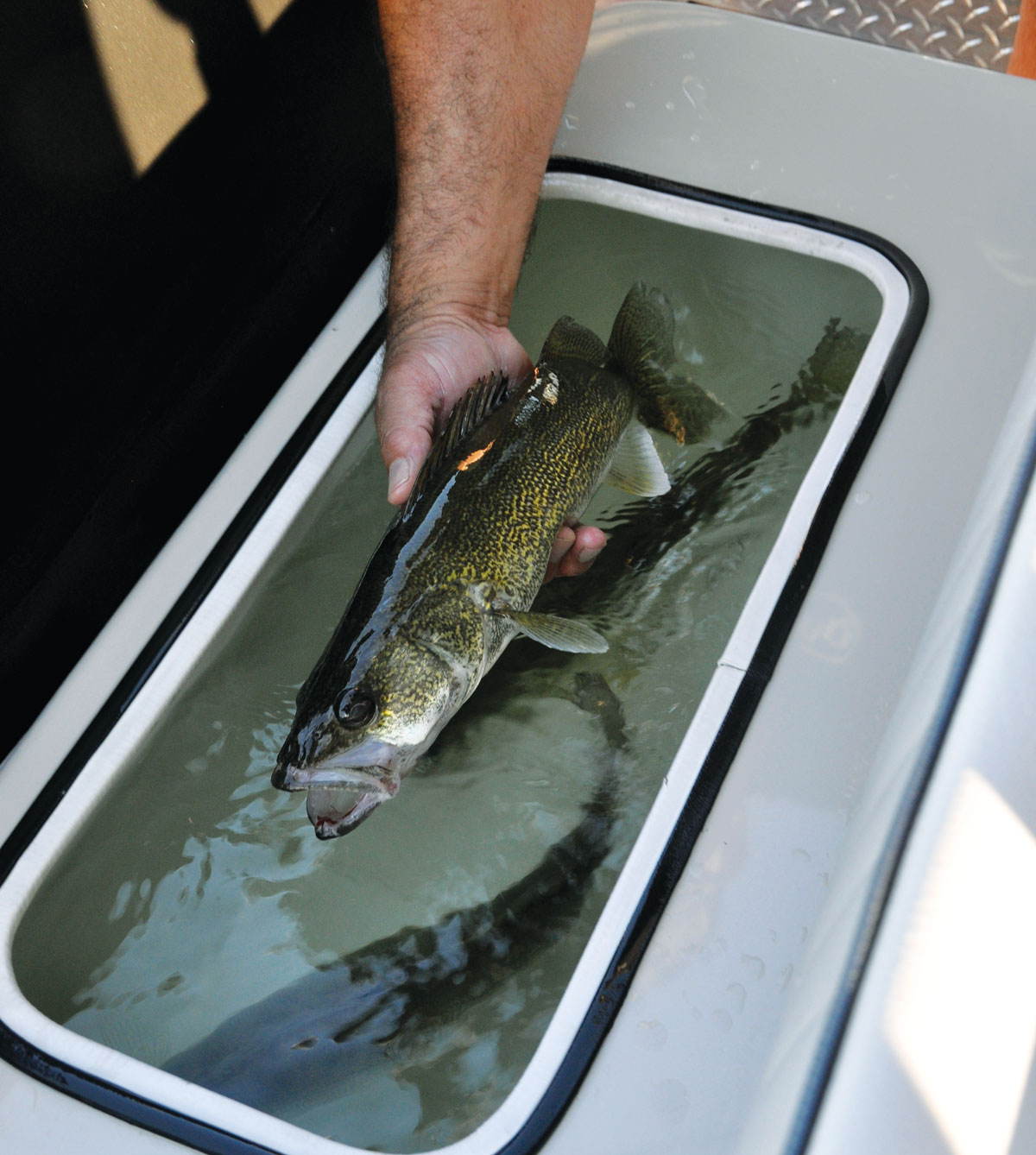

Livewell systems on modern fishing boats are being improved upon every year by manufacturers who know the importance of being able to keep fish alive over the course of a fishing day. Fishing tournaments that require the catch to be alive at weigh-in have driven modern livewell technology, but recreational anglers who want the freshest fish for the dinner table have benefitted from the advances. The heat of August adds its own challenges to keeping the catch alive and well.
That said, there are some basics about keeping a healthy environment for fish aboard your deck or pontoon boat–additional tactics you can take and accessories you can add to keep your catch comfortable aboard your boat. What’s more, not all fish have the same requirements once aboard. Bass, for example, are members of the sunfish family, a group of fishes tolerant of high water temperatures and low oxygen levels. Walleye, on the other hand, are much less tolerant of low oxygen and high water temps, and are harder to keep healthy in a livewell. Trout and other salmonids are even more fickle.
As livewell systems aerate water, they introduce fresh air to the system. Air contains 21 percent oxygen and combined with the fact that gasses are not equally soluble in water, even less oxygen is transferred into the water. Cold water is able to obtain more oxygen from an aeration system than is warm water, which is why some tournament anglers add ice to their wells during summer fishing competitions.
For example, 60 degree water contains 7.2 mL/L of oxygen, compared to 85 degree water containing only 5.6mL/L. To maximize the amount of oxygen available to fish in a closed environment such as a livewell, dropping the temperature of the water is critical.
As oxygen levels in a livewell system decrease, oxygen deprivation stress occurs in the fish. That stress places a higher demand on the oxygen requirements of the fish, creating an even worse condition that compounds the problem.
In addition to a higher requirement for oxygen, stressed fish also generate more excretory products, containing high levels of ammonia. That increase in ammonia levels in the water lowers the pH, which in itself can kill the fish. It also leads to a higher activity level in the affected fish, creating higher water temperatures in the livewell water, which can also lead to mortality.
It’s common knowledge among anglers that increased ammonia levels are toxic to fish; what’s not as well known is that the toxicity of ammonia can be decreased with an increase in salinity, or the salt content, of that water. Ammonia build-up is also one of the prime reasons why, instead of recirculating water in your livewell or baitwell, introducing fresh water into a system whenever possible is important.
What’s more, increased carbon dioxide in livewells leads to a lowering of the pH level in the blood of fish. That decreases the hemoglobin oxygen carrying capacity of the blood of the fish, leading to less oxygen being available to it.
Balance everything properly during the hot summer months and you’ll arrive back at the dock with a livewell full of frisky fish. Cut a corner, and you face the fragrant alternative.

- Continuously run the boat’s fresh water aeration system to introduce new water into the system. In hot weather, don’t use timed aerators; leave the pumps on from the time the first fish is placed in the livewell until it is removed back at the dock for weigh-in or to be iced for dinner.
- Lower the temperature of the water in the livewell by adding ice. Carry a minimum of two bags or blocks of ice, kept in a separate cooler to remain frozen all day. Introduce the ice to the livewell in the bag, which increases the amount of time it will remain frozen.
Don’t worry about introducing chlorine to the livewell’s water via the melting ice; freezing removes the chemical from the water.
- Use an oxygen injection system, such as those offered by KeepAlive and Oxygen Edge, or the Pure Oxygen system offered by AquaInnovations. These add oxygen concentrations as high as 99% into a livewell’s water system, much more than the 21 percent introduced via ambient air from traditional aeration systems.
- Add salt to the water to achieve a .05 percent solution. A rate of 1/3 cup of non-iodized salt per 5 gallons of water is standard for achieving that concentration. (See Getting Salty sidebar for a more detailed formula.)
- Use water conditioners made for adding to livewells, such as Rejuvenade. Most contain methyl blue, a compound that allows water to hold more oxygen, as well as other chemicals that help relax the fish and protect its mucus coating.
Salt decreases the toxicity of ammonia, helps maintain the slime coat, helps fight parasites, and battles blood deprivation in fish kept in the proper solution of brine. It’s imperative to use non-iodized salt when increasing a livewell’s salinity, which means that common table salt is out, but rock salt, sea salt, water softener salt or non-iodized table salt can be used. Here is a formula to consider when determining how much salt to add to a typical 12-gallon livewell, such as that offered on my Hurricane Deck Boat pick this month:
- 37.8 x volume of well = # grams of salt to add
- 454 grams = 1 pound
Example: (for a 12-gallon livewell) 12 gal x 37.8 = 453.6 grams = 1 pound of salt


I really like Hurricane boats, and this FunDeck model has it all, from great fishing features to comfortable cruising and entertainment options for up to 13 passengers. Not that you want a baker’s dozen of anglers fishing at once, but such capacity tells you that this craft offers plenty of elbow room whether fishing or cruising aboard a deck boat that offers a shallow draft and excellent stability–attributes of a quality deck boat.
On the bow, forward of a pontoon-like “playpen” deck enclosure, the FunDeck sports a boarding ladder, anchor storage and a pair of adjustable fishing chairs that can be removed to open up the forward deck for other activities. Amidships there is in-floor storage for tackle, surrounded by plush wrap-around seating flanked by a fully-appointed helm. There are plenty of fishing options available to customize the Hurricane for various angling pursuits, and at 12 gallons the boat’s livewell is the perfect size for adding an even pound of salt to keep the catch alive and kick…er finning on a warm summer day.
- Length:22’ 2”
- Beam:8’
- Weight:3,150 lbs.
- Capacity:13 people/1,815 lbs.
- Fuel Capacity:27 gals.
- Max HP:200hp
www.hurricaneboats.com